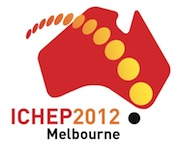Speaker
Description
Summary
Comparison of the topological cross sections with models has shown that the negative binomial distribution (NBD) overestimates experimental data at high multiplicity region, Nch > 20, but describes well the region of a small multiplicity. Good agreement has been received using the gluon dominance model with including the gluon sources fission.
To restore neutral pion multiplicity, the electromagnetic calorimeter (EMCal) is used. Owing to its restricted aperture and threshold energy of a gamma-quantum registration, the restoration of a π0- meson number in every single event is impossible. This multiplicity is restored by means of simulation of EMCal work. For this purpose we have used Monte Carlo event generator PYTHIA5.6. For 10 mil simulated inelastic events the linear dependence between the mean multiplicity of π0- mesons and the number of EMCal registered photons has been revealed. Besides, the next procedure was carried out. The simulated events were broken up into samples according to charged particle number, Nch. Every sample was divided into groups of events by EMCal registered photon number, Nγ. In each group the π0- meson number distribution was restored. This distribution determines the share of events with a possible number of neutral mesons. By means of these distributions the multiplicity distributions of neutral mesons, N0, has been received from experimental data for photons.
To analyze neutral pion number fluctuations versus total multiplicity, Ntot = Nch + N0, the variable n0 = N0 / Ntot, (a region of change [0, 1]) is used. These distributions were parameterized by Gauss function to restore the missing regions. The found values of scaled variance are agreed well with the magnitude of ω defined on simulated events at Ntot < 22. At the same time we reveal the significant growth of ω, reachable by more than 7 standard deviations at Ntot ~ 30 as opposed to the tendency for the simulated events. This growth has been observed both registered photons (Ntot = Nch + Nγ), and restored neutral pions.
Critical point of pion condensation is determined in statistical physics by an expression [2]. The density, ρ , is equal to 0.2 fm-3 at interaction region size for two protons ~ 3 fm. In this case the critical energy is resulted to Ecrit = 100 MeV. At 50-GeV proton beam and Ntot = 30 the mean energy of pion, Eπ = (Ecms – 2 mN – Ntotmπ)/Nπ , is equal to 120MeV. This value is compatible with Ecrit. Thus the experimental observable growth of scaled variance at U-70 for registered gamma-quanta and restored neutral pion multiplicity can testify to BEC formation in the pion system at high multiplicity events.
At present we are planning to study soft photon (Eγ < 100 MeV) yield versus neutral, charged and total multiplicities. Experiments carried out in last year’s point to the excess its yield in comparison with theoretical estimations. The exhaustive explanation of this collective phenomenon is absent. In the approach developed by S. Barshay [6] the excess of soft photon yield is connected with BEC formation in the pion system. Also we will increase statistics to move forward to a totally much higher multiplicity region.
1. CMS Collaboration. S. Chatrchyan et al. Phys. Lett. B701, 535 (2011).
2. L.D. Landau and I.M. Lifshitz. Vol. 5. Statistical physics, part 1 (3ed., Pergamon, 1980).
3. M.I. Gorenstein and V.V. Begun. Phys. Lett. B653, 190 (2007); Phys. Rev. C77, 064903 (2008).
4. SVD Collaboration, Phys. At. Nucl. 2012; E.S. Kokoulina et al. Yad. Fiz. 75, №6, 12 (2012); Progr. Theor. Phys. Proc. ISMD2011, Japan.
5. E.S. Kokoulina. Acta Phys. Pol. B35, 295 (2004); AIP Conf. Proc. 828, 81 (2006).
6. S. Barshay, Phys. Lett. B 227, 279 (1989).
